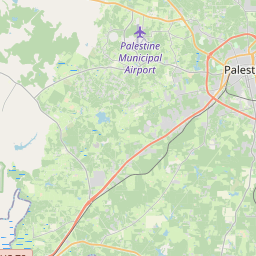Denson Graves Cemetery







To address the problem of cemetery destruction and to record as many cemeteries as possible, the Texas Historical Commission offers the Historic Texas Cemetery designation.
The Historic Texas Cemetery designation was developed in 1998 to help protect historic cemeteries by recording cemetery boundaries in county deed records to alert present and future owners of land adjacent to the cemetery of its existence. Every county in Texas has at least one cemetery designated as a Historic Texas Cemetery through this program. The HTC designation is the first step toward preservation of a historic cemetery.
A cemetery is eligible for designation if it is at least 50 years old and is deemed worthy of recognition for its historical associations. The very nature of a cemetery being a landmark of a family’s or community’s presence is considered to validate the criteria of historical associations. Any individual, organization, or agency may submit a request for designation.
Texas is also home to the world's largest honky-tonk, Billy Bob's Texas in Fort Worth. The venue covers three acres and can hold up to 6,000 people.
The county's economy flourished with the arrival of immigrants from the United States and Europe, who established plantations and worked in the timber industry. The town of Palestine, the county seat, developed as a vibrant agricultural center, known for its cotton production. The construction of railroads in the late 19th century further boosted the county's economic growth. However, Anderson County also had its share of challenges.
Like many other areas of Texas, it witnessed tensions and conflicts during the American Civil War, with some residents supporting the Union and others the Confederacy. Reconstruction was a difficult period for the county, as it endured economic decline and political instability.
In the 20th century, Anderson County experienced significant changes and modernization. The discovery of oil reserves in the early 1930s brought economic prosperity to the region. The establishment of the Texas Department of Corrections in the county in 1849 also played a major role in shaping the county's history, as it became home to several state prisons and correctional facilities. Today, Anderson County is known for its diverse economy, including agriculture, manufacturing, and tourism.
The region's rich history is evident in its numerous historic sites and landmarks, making it a fascinating destination for those interested in Texas history and culture.
Anderson County Timeline
This timeline provides a condensed summary of the historical journey of Anderson County, Texas.
- 1836: Anderson County is established on March 24, 1836, as one of the original counties of the Republic of Texas.
- 1838: The town of Palestine is established as the county seat of Anderson County.
- 1861-1865: During the American Civil War, the county's economy is severely affected, and many locals serve in the Confederate Army.
- Late 1800s: The arrival of the railroad in Palestine brings growth and development to Anderson County, making it an important transportation hub.
- Early 1900s: The discovery of oil in the area leads to an economic boom, with various oil fields and refineries being established.
- 1930-1940: The Great Depression and the drought of the 1930s bring significant challenges to Anderson County, leading to decreased economic activity and population decrease.
- Late 20th century: Anderson County experiences shifts in its economy with the decline of the oil industry. Agriculture becomes an important sector, with the county known for its timber, poultry, and cattle production.
- 2000s: Anderson County continues to strive for economic growth and development, focusing on diversified industries, including manufacturing, retail, and healthcare.